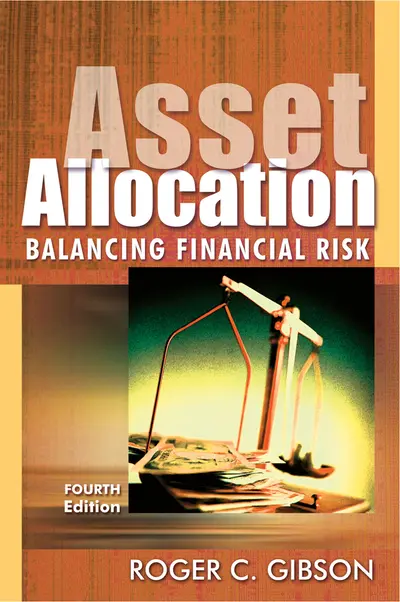My Account Details

ISBN10: 007159390X | ISBN13: 9780071593908

Step 1 . Download Adobe Digital Editions to your PC or Mac desktop/laptop.
Step 2. Register and authorize your Adobe ID (optional). To access your eBook on multiple devices, first create an Adobe ID at account.adobe.com. Then, open Adobe Digital Editions, go to the Help menu, and select "Authorize Computer" to link your Adobe ID.
Step 3. Open Your eBook. Use Adobe Digital Editions to open the file. If the eBook doesn’t open, contact customer service for assistance.
The definitive guidebook for successful long-term investing The third edition of Roger C. Gibson's Asset Allocation: Balancing Financial Risk was released in 2000 on the heels of the biggest bull market in a century and amidst talk of a new economy. The bear market that followed was the worst since 1973-1974 and resulted in the destruction of roughly half of the stock market's value. Through it all, Roger Gibson's advice to investors remained the same. Gibson once again offers techniques to design all-weather portfolios that improve long-term performance, while mitigating overall risks through widely varying market environments. Grounded in the principles of modern portfolio theory, this fourth edition of his investing classic explains how and why asset allocation works. Gibson demonstrates how adding new asset classes to a portfolio improves its risk-adjusted returns and how strategic asset allocation uses, rather than fights, the forces of capital markets to achieve investment success. Gibson also addresses the practical side of investing, advocating an approach based on a disciplined execution of the fundamentals--the most important things that investment professionals and lay investors need to focus on to achieve their financial goals. With more than two decades of experience managing clients' portfolios and expectations, he underscores the importance of identifying and working through the emotional and psychological traps that can impede investment success. In this new edition, Gibson offers his proven guidance on multiple-asset-class investing with updated exhibits and research. New topics include: A review of the 2000-2002 stock bear market in the context of bull and bear markets over the last 100 years An expanded discussion of the dangers of market timing Non-traditional asset classes such as real estate securities, commodity-linked securities, and TIPS in a diversified portfolio The challenges of “frame-of-reference” risk--the most significant danger confronting the multiple-asset-class investor The role of Monte Carlo simulation in retirement planning
Introduction
Chapter 1: The Importance of Asset Allocation
Chapter 2: Historical Review of Capital Market Investment Performance
Chapter 3: Comparative Relationships Among Capital Market Investment Alternatives
Chapter 4: Market Timing
Chapter 5: Time Horizon
Chapter 6: A Model for Determining Broad Portfolio Balance
Chapter 7: Diversification: The Third Dimension
Chapter 8: Expanding the Efficient Frontier
Chapter 9: The Rewards of Multiple-Asset-Class Investing
Chapter 10: Portfolio Optimization
Chapter 11: Know Your Client
Chapter 12: Managing Client Expectations
Chapter 13: Portfolio Management
Chapter 14: Resolving Problems Encountered During Implementation
Conclusion
Need support? We're here to help - Get real-world support and resources every step of the way.